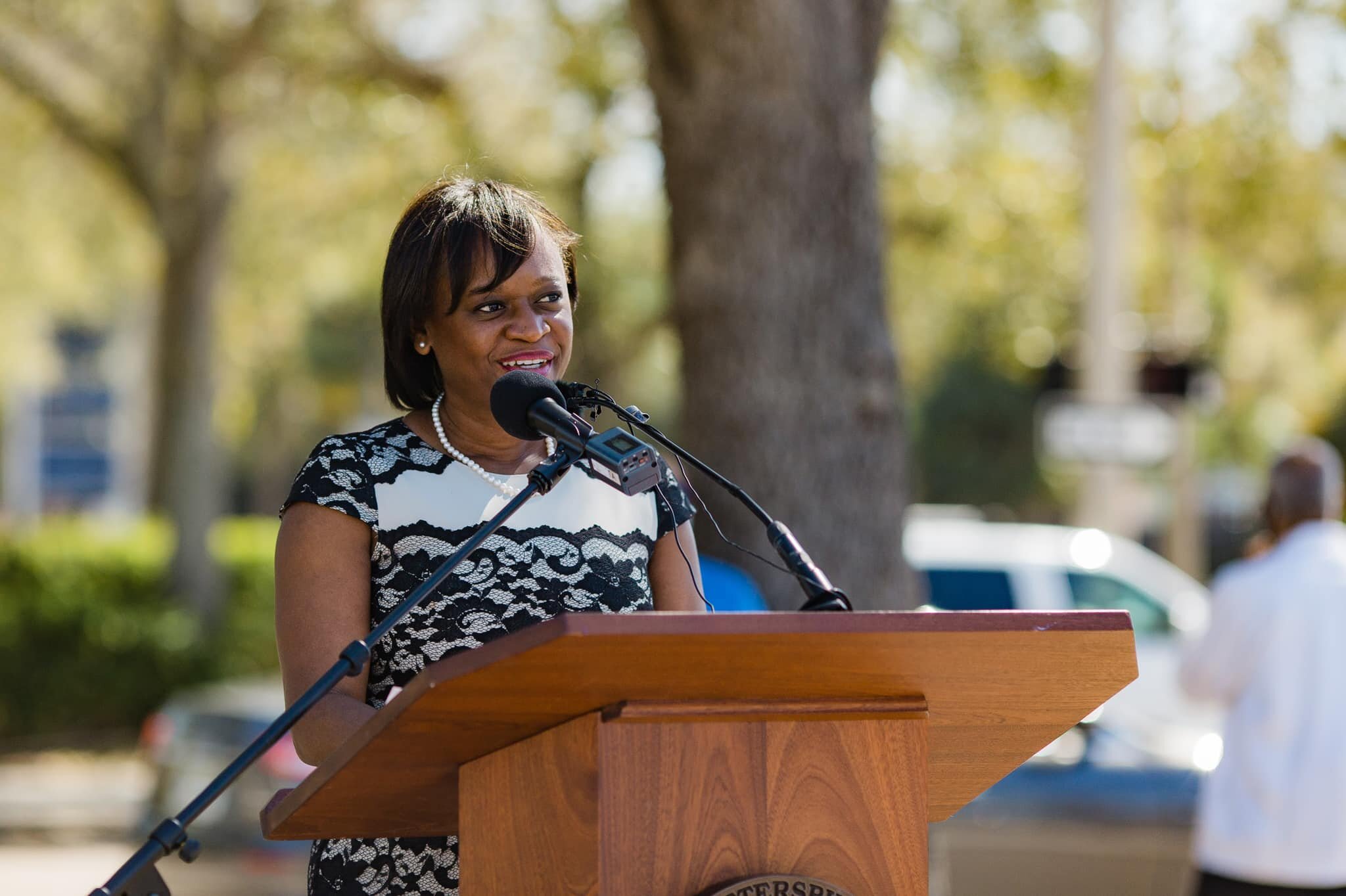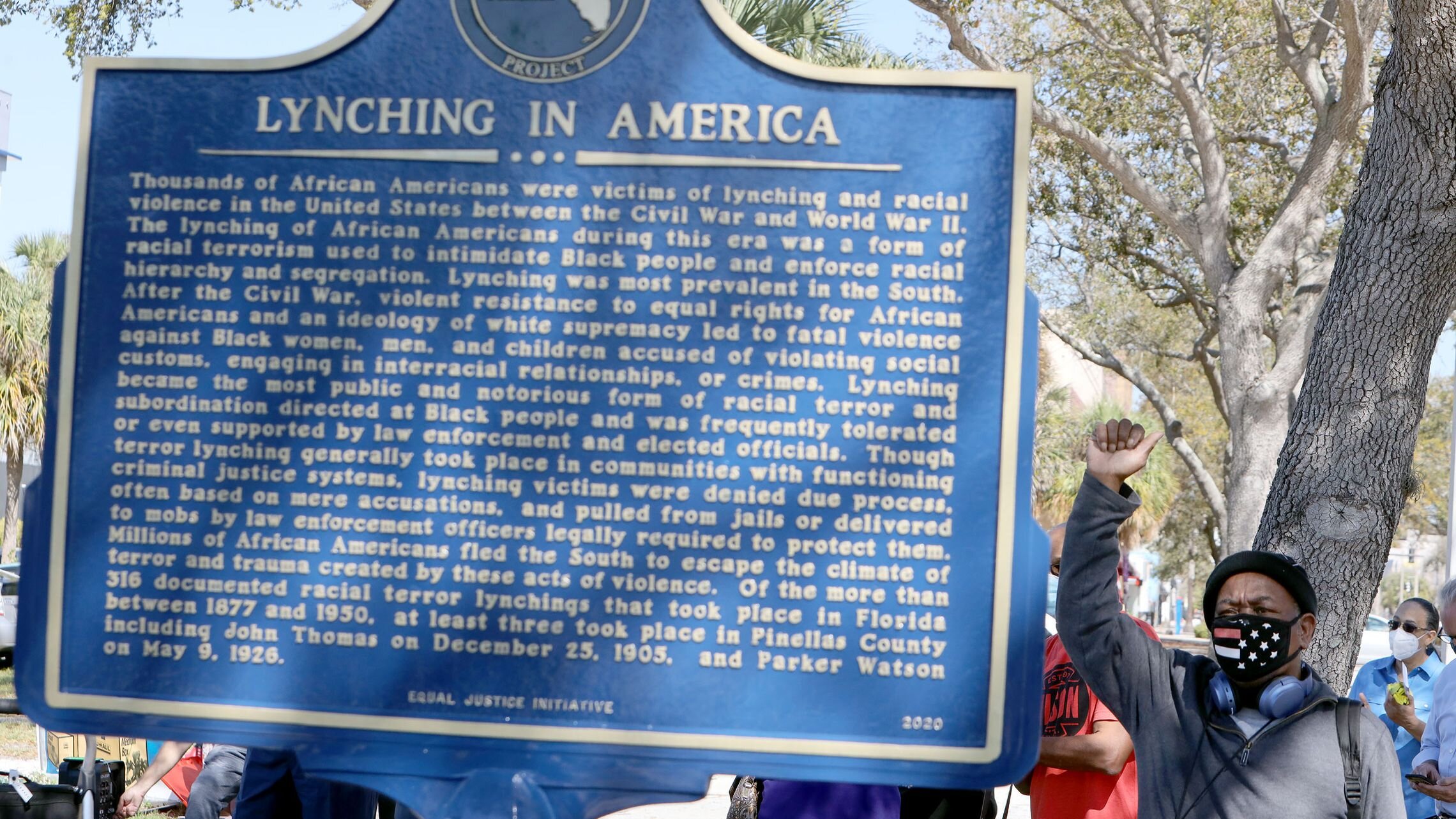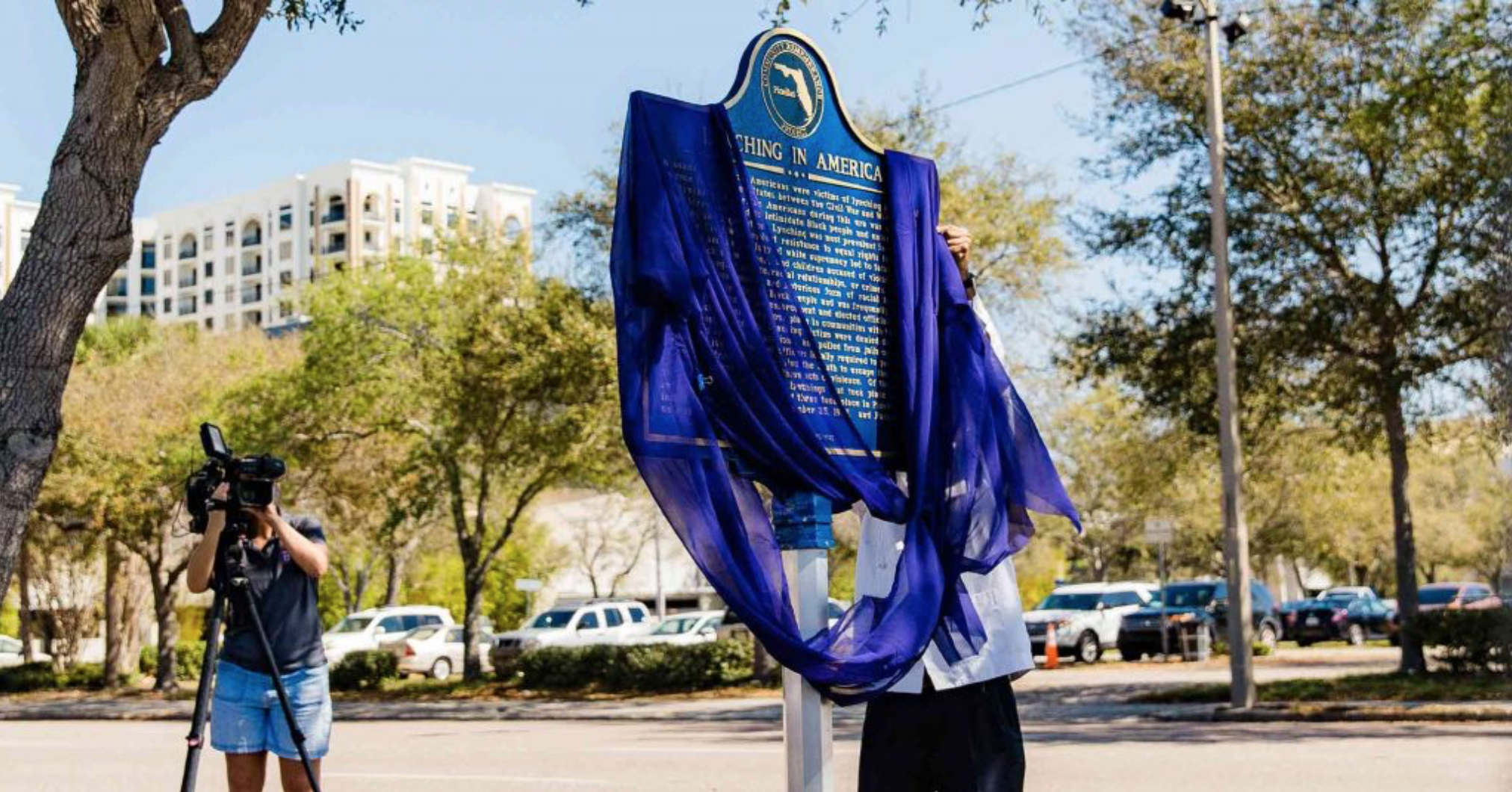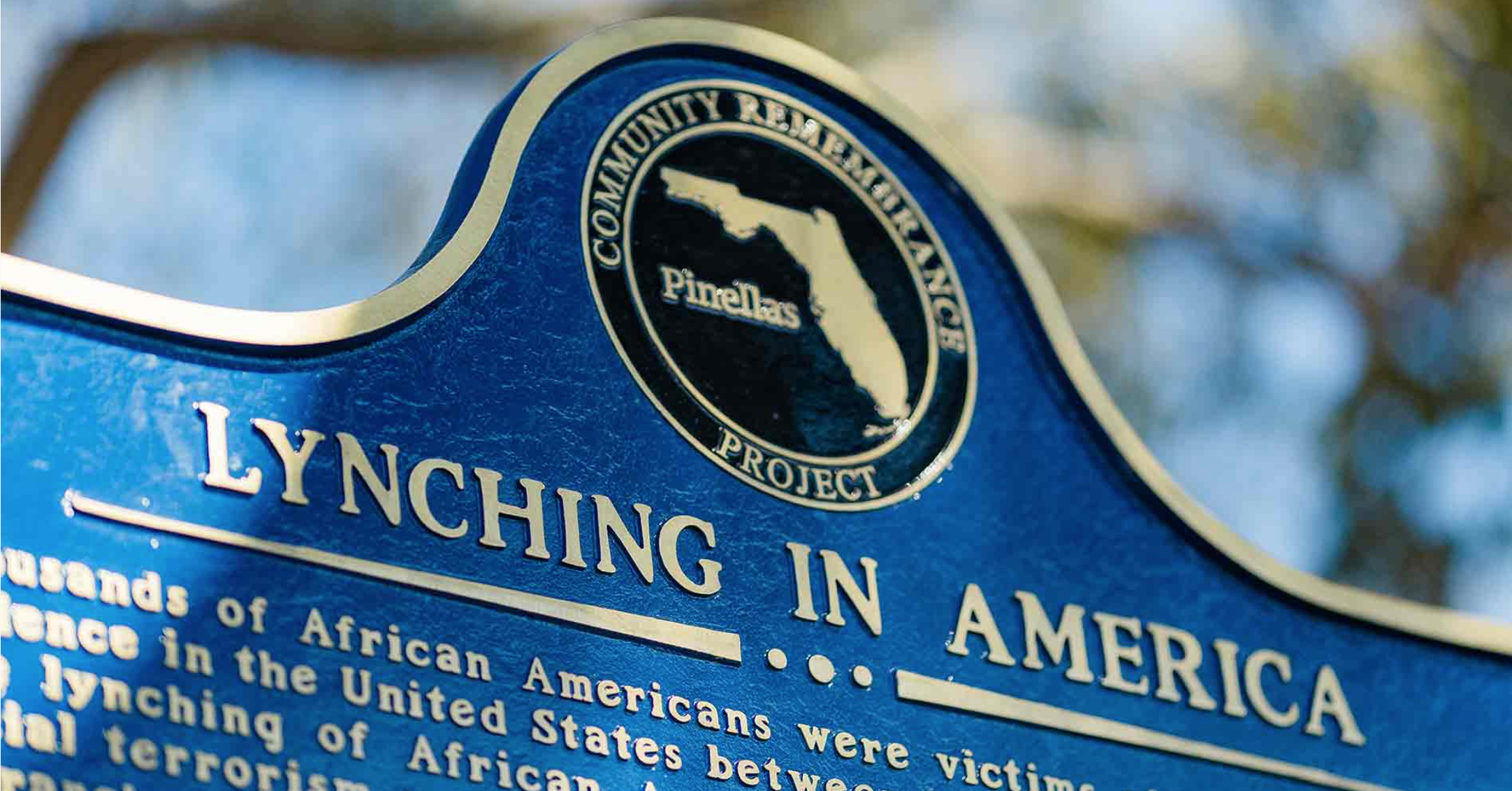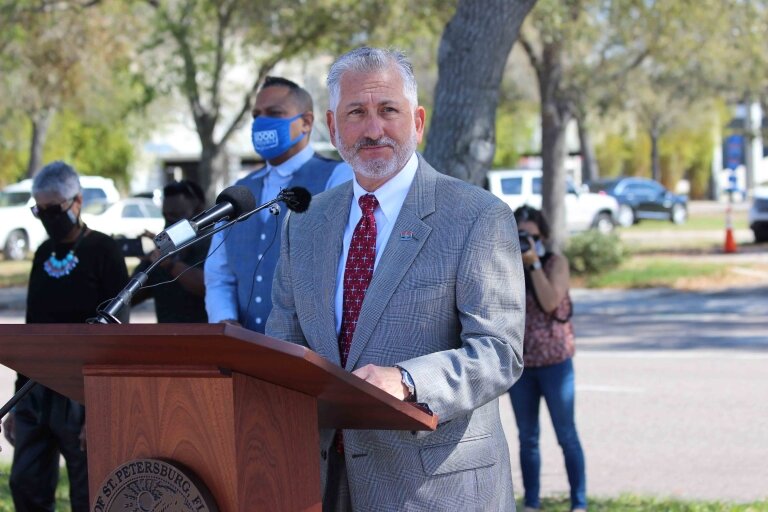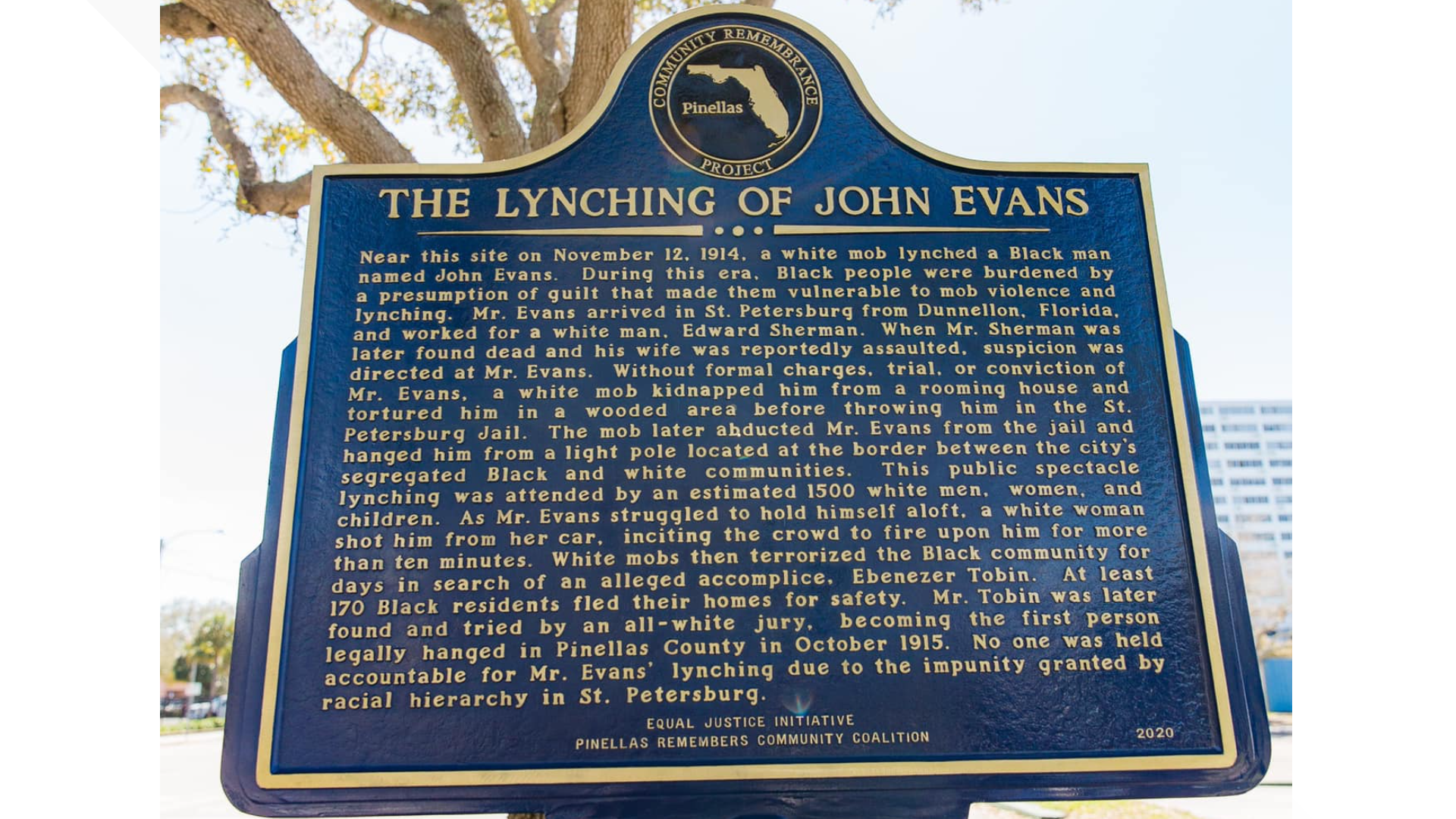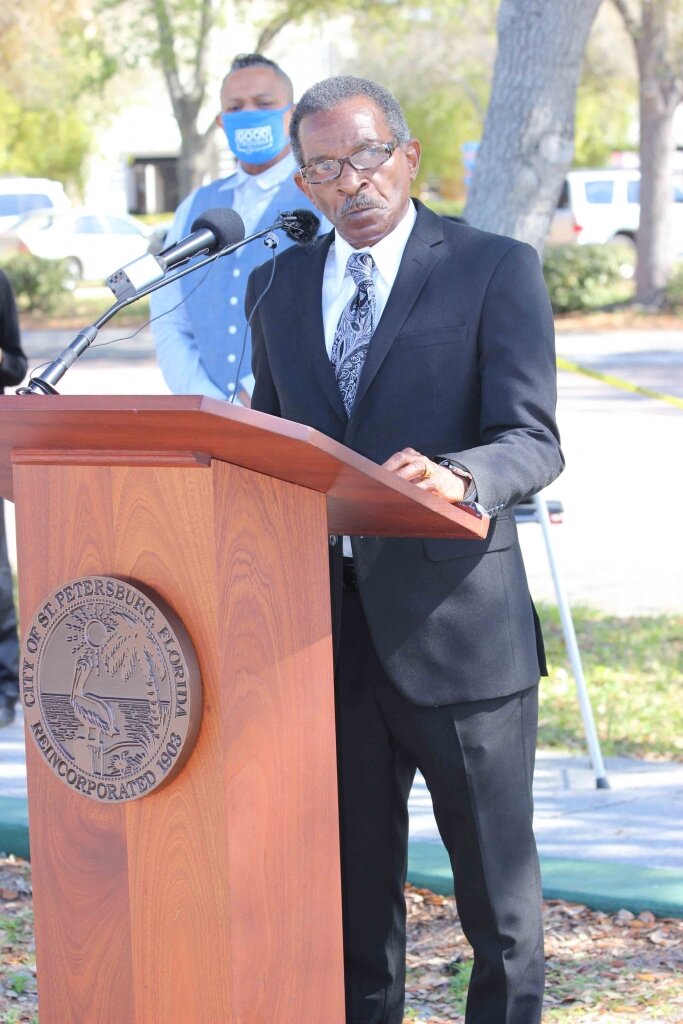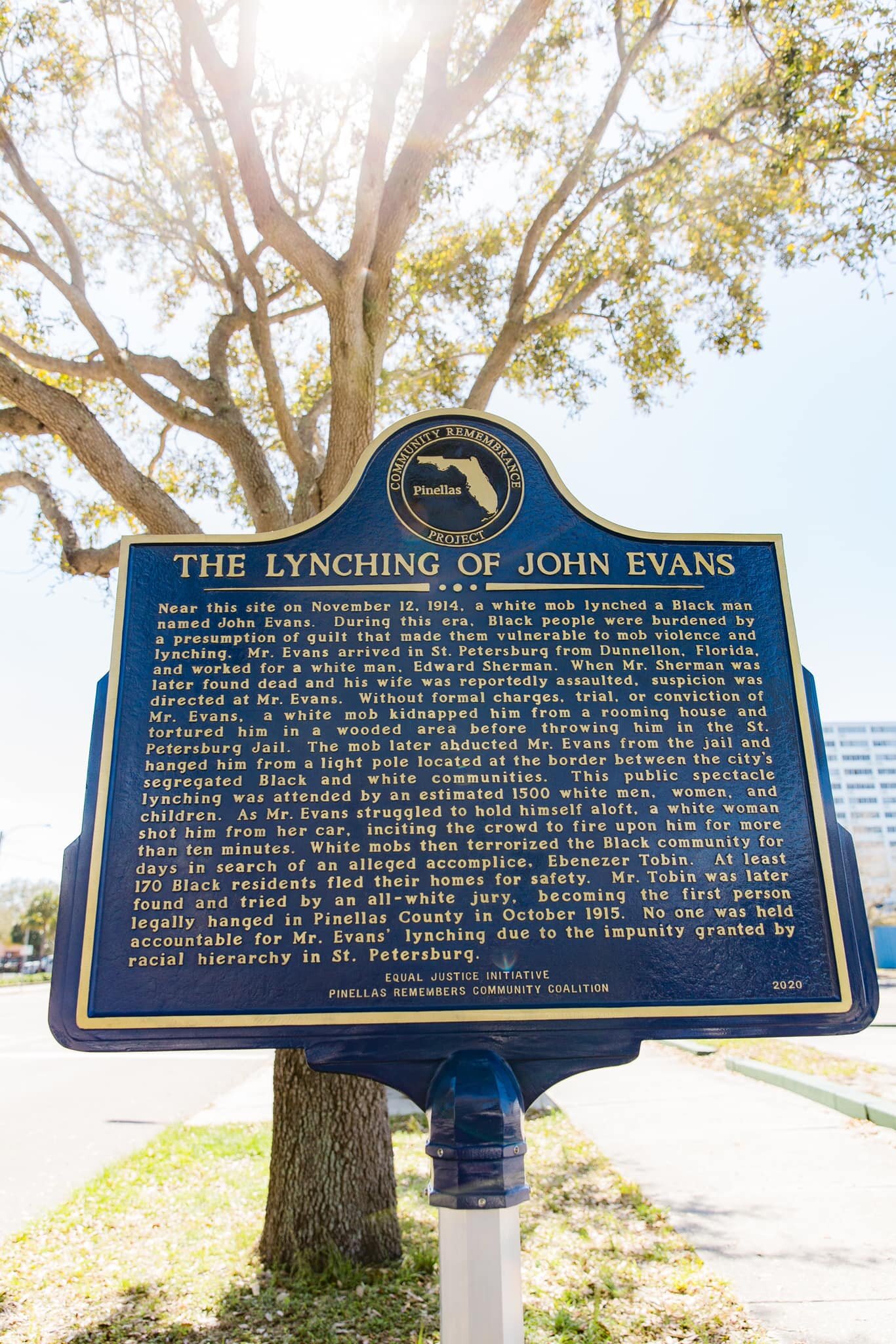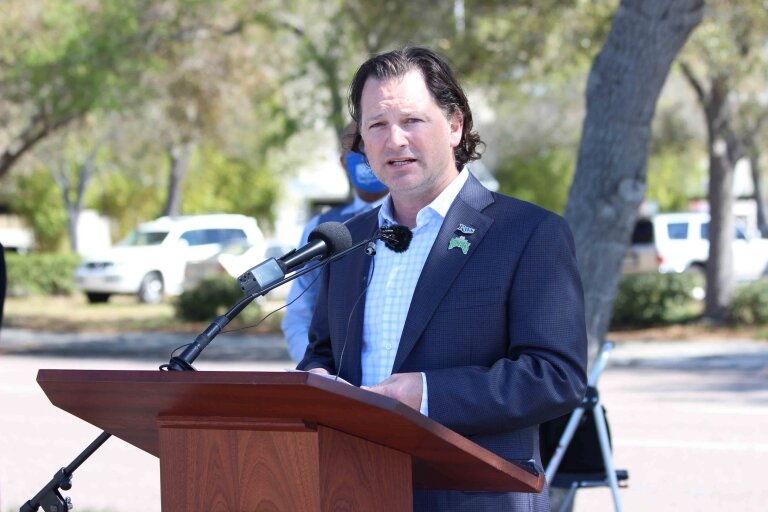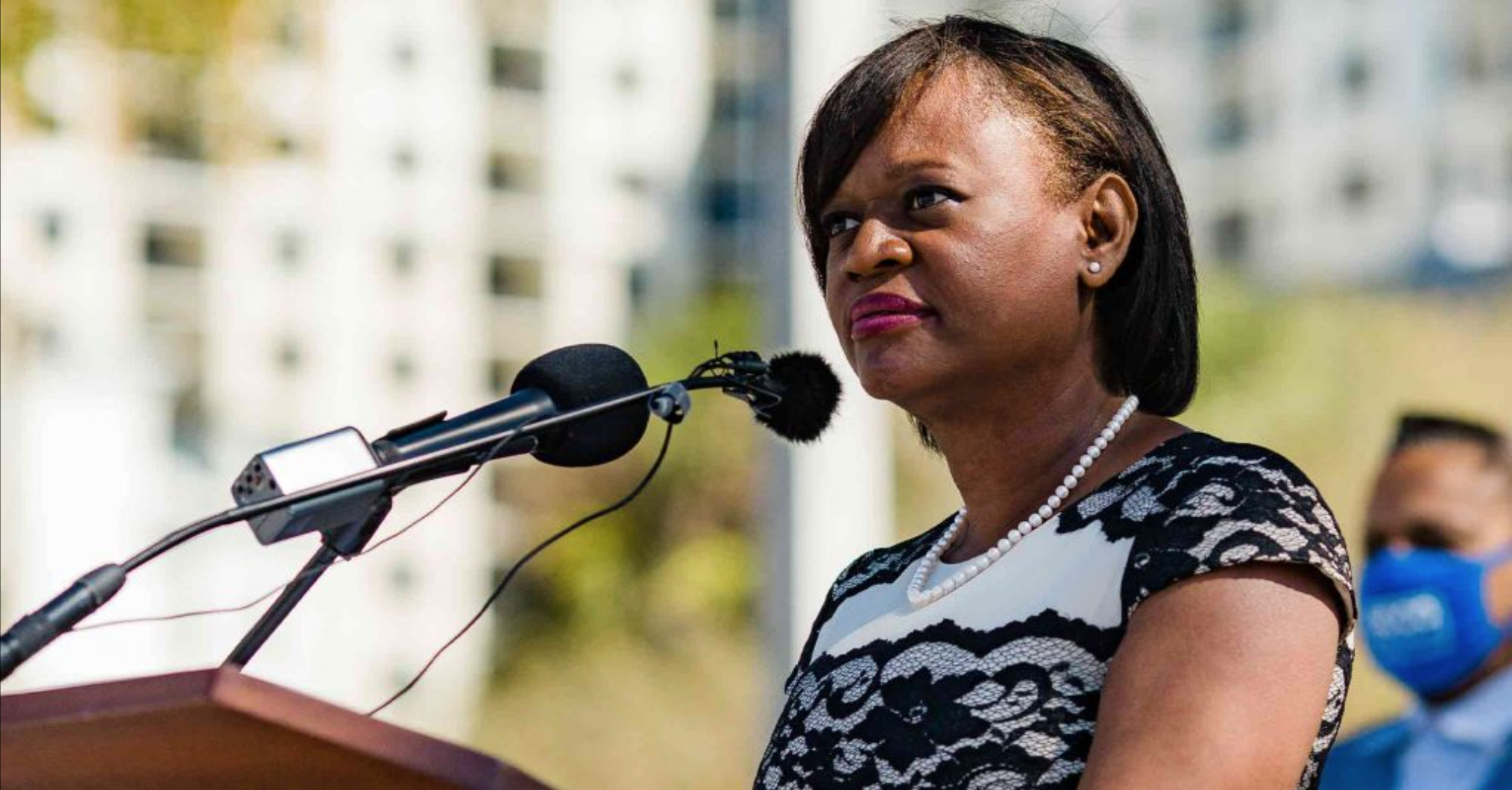
Memorial Marker Installation 2021 Recap
Watch the Unveiling Ceremony
A special thank you to our sponsors who made this possible:
“Let us bring something positive out of their deaths. First by remembering that it happened; two, by accepting the fact of it happening; three, by agreeing it will never happen again.”
Attorney Jacqueline Hubbard, Pinellas Remembers

Visit the Lynching Memorial
2nd Ave S & Dr. M.L.K. Jr St S
St. Petersburg, FL 33701
Read the Marker
The Lynching of John Evans:
“Near this site on November 12, 1914, a white mob lynched a Black man named John Evans. During this era, Black people were burdened by a presumption of guilt that made them vulnerable to mob violence and lynching. Mr. Evans arrived in St. Petersburg from Dunnellon, Florida and worked for a white man, Edward Sherman. When Mr. Sherman was later found dead and his wife was reportedly assaulted, suspicion was directed at Mr. Evans. Without formal charges, trial, or conviction of Mr. Evans, a white mob kidnapped him from a rooming house and tortured him in a wooded area before throwing him in the St. Petersburg Jail. The mob later abducted Mr. Evans from the jail and hanged him from a light pole located at the border between the city’s segregated Black and white communities. This public spectacle lynching was attended by an estimated 1500 white men, women, and children. As Mr. Evans struggled to hold himself aloft, a white woman shot him from her car, inciting the crowd to fire upon him for more than ten minutes. White mobs then terrorized the Black community for days in search of an alleged accomplice, Ebenezer Tobin. At least 170 Black residents fled their homes for safety. Mr. Tobin was later found and tried by an all-white jury, becoming the first person legally hanged in Pinellas County in October 1915. No one was held accountable for Mr. Evans’ lynching due to the impunity granted by racial hierarchy in St. Petersburg.”
Lynching in America:
“Thousands of African Americans were victims of lynching and racial violence in the United States between the Civil War and World War II. The lynching of African Americans during this era was a form of racial terrorism used to intimidate Black people and enforce racial hierarchy and segregation. Lynching was most prevalent in the South. After the Civil War, violent resistance to equal rights for African Americans and ideology of white supremacy led to fatal violence against Black women, men, and children accused of violating social customs, engaging in interracial relationships, or crimes. Lynching became the most public and notorious form of racial terror and subordination directed at Black people and was frequently tolerated or even supported by law enforcement and elected officials. Though terror lynching generally took place in communities with functioning criminal justice systems, lynching victims were denied due process, often based on mere accusations, and pulled from jails or delivered to mobs by law enforcement officers legally required to protect them. Millions of African Americans fled the South to escape the climate of terror and trauma created by these acts of violence. Of the more than 316 documents racial terror lynchings that took place in Florida between 1877 and 1950, at least three took place in Pinellas County including John Thomas on December 25, 1905, and Parker Watson on May 9, 1926.”


